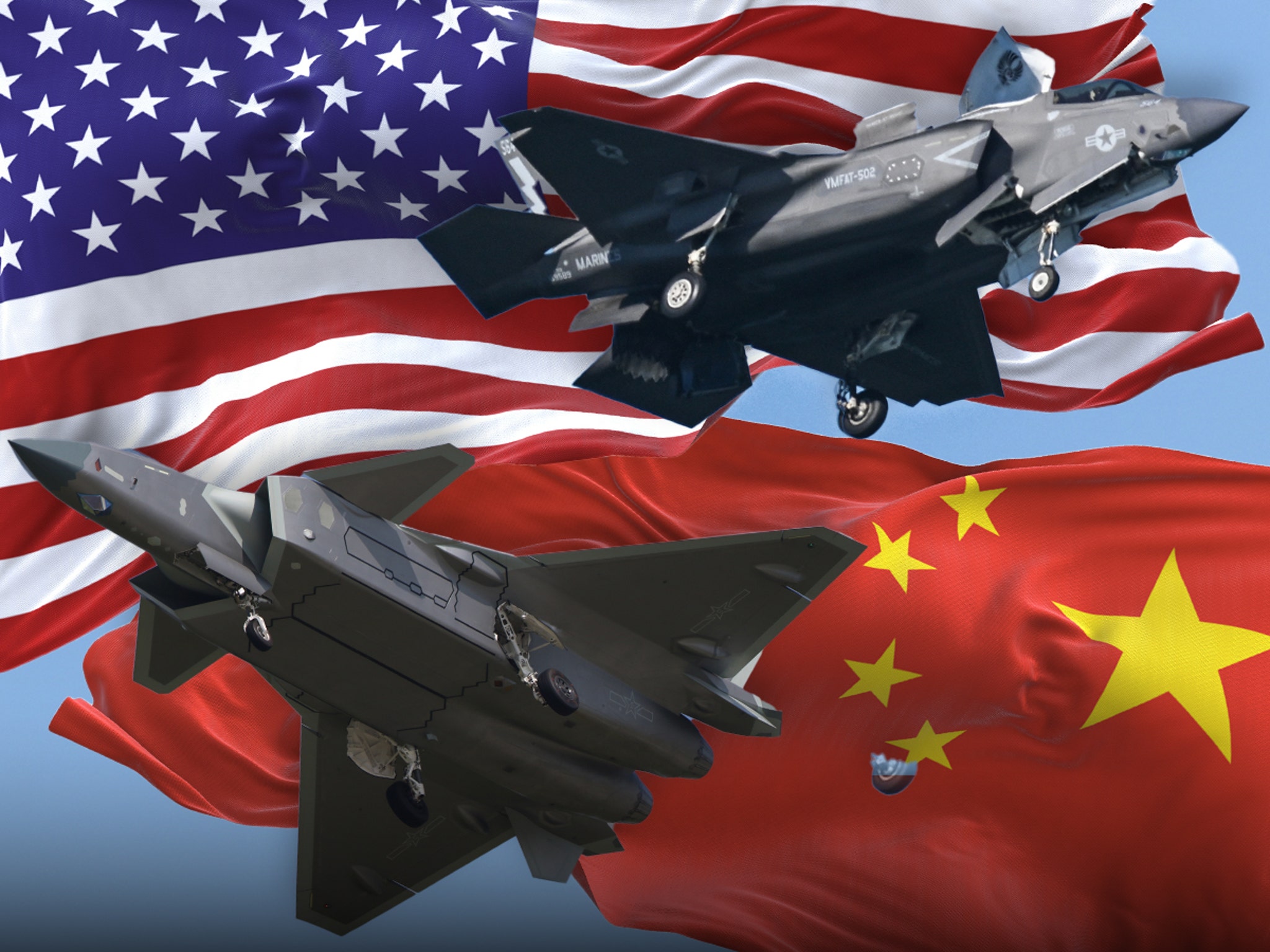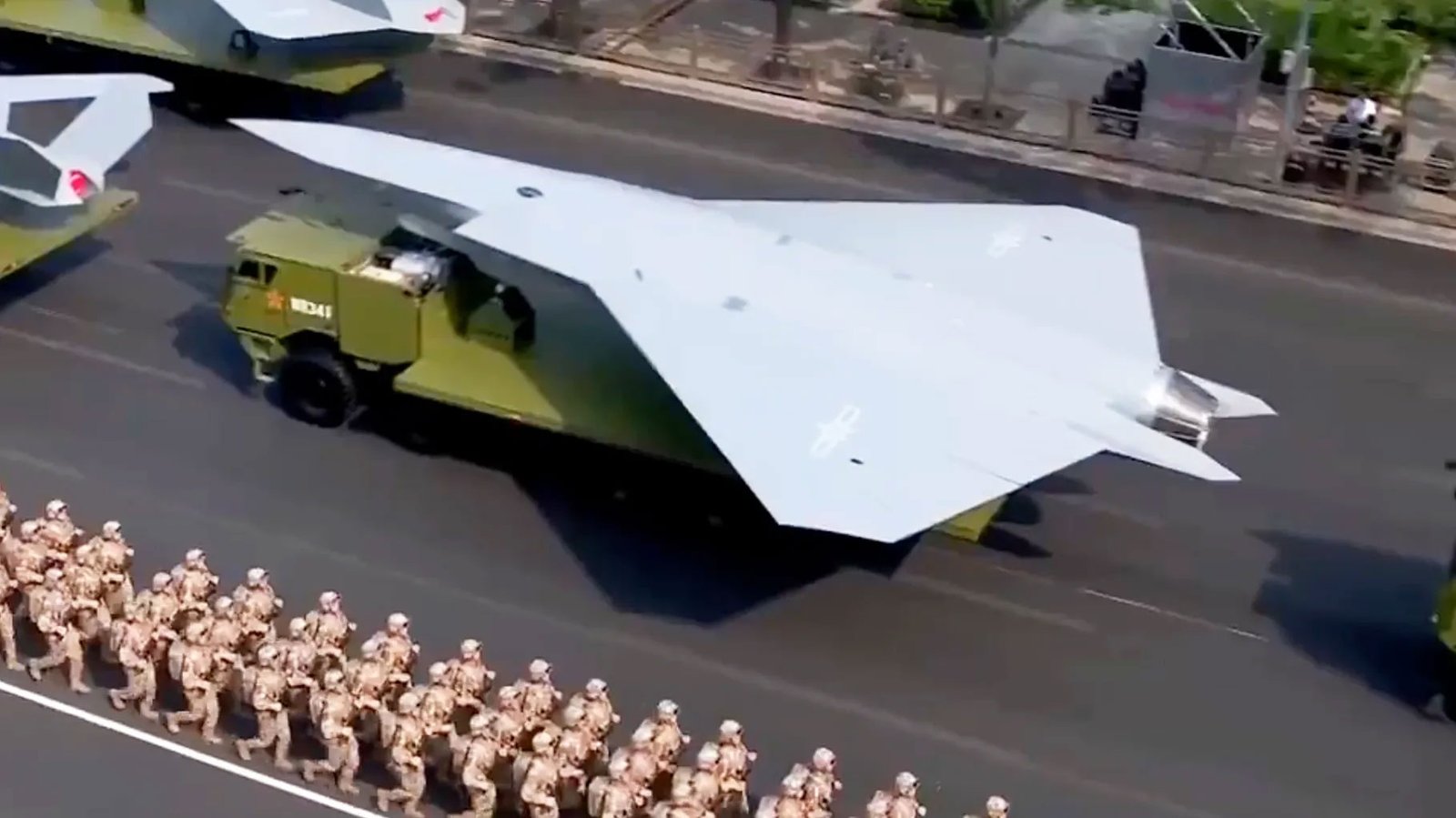A New Chapter in Drone Warfare

China Unveils Next-Gen Unmanned Stealth Jet in Military Display. On September 3, 2025, China showcased a dramatic leap in unmanned combat aviation. During a major military parade in Beijing, marking the 80th anniversary of its World War II victory over Japan, a large, stealthy drone known as the Type B was revealed.
This aircraft was the most striking among several new drone designs. Its appearance signals China’s growing ambitions in air combat technology.
World’s Largest Air Forces by Total Numbers of Fighter Jets in 2025. The United States dominates global air power in 2025, operating the world’s largest fleet of fighter jets.
The Type B Drone: Design & Features

The Type B drone is roughly the size of a J-10 fighter. It uses a tailless design with a diamond-shaped, delta wing that has cropped tips. Large control surfaces are placed along the trailing edges.
Its shape and features suggest high performance. Analysts believe it may be capable of supersonic flight and low-observable operations, much like advanced stealth fighters.
The drone has side-mounted engine intakes using diverterless supersonic inlet (DSI) technology. This type of intake is also seen on modern crewed fighters. At the rear, it features a serrated engine nozzle, similar to the one on the F-35, to reduce its radar signature.
Internal Weapons & Sensors

To maintain stealth, the drone appears to carry weapons internally. Underside photos show large internal bays, likely meant for missiles or bombs.
A visible chin-mounted sensor suggests precision targeting capabilities. This is similar to the Electro-Optical Targeting System (EOTS) used on the F-35. The presence of such a sensor points to a multirole capability — including surveillance, strike, and air combat.
Type A and Type B: A Dual Development Approach

The Type B was presented alongside a smaller model, now referred to as the Type A. While also tailless, the Type A has a lambda-shaped wing and a more slender design. It lacks the chin sensor and seems optimized for different roles, possibly prioritizing speed and agility.
Both drones carried serial numbers linked to a real Chinese Air Force unit in the Western Theater Command. However, there is no public proof that either drone is in active service yet.
Prototypes or Future Warplanes?
It may be possible the two big CCAs, based on their landing gear, internal fuselage details (wiring, piping), and other external fuselage markers (surfaces, engine nozzles), may actually be real airframes. It would be odd for mockups to be so detailed.
TBC pic.twitter.com/9kv5ru1WZ3
— Rick Joe (@RickJoe_PLA) September 3, 2025
Analysts believe these drones may be working prototypes or full-scale test platforms. Their level of detail, including access panels and aerodynamic features, goes far beyond what is typical of parade mock-ups.
China has a history of showing mock-ups that later become real systems. A key example is the GJ-11 Sharp Sword, which first appeared in an early form before entering active development.
Tactical Roles & Manned-Unmanned Teaming
The Type B could carry out various missions. It may be capable of air-to-air combat, precision strikes, and intelligence gathering. China is also exploring manned-unmanned teaming, particularly with the two-seat version of the J-20 stealth fighter, known as the J-20S.
In such a configuration, the second pilot could control one or more drones in real time. This would give China an edge in multi-domain operations.
A Different Path from the United States

China’s approach contrasts with that of the U.S. Air Force. The U.S. has shifted toward low-cost Collaborative Combat Aircraft (CCA) meant to fly alongside crewed jets. These are simpler, cheaper, and optimized for mass production.
The U.S. has no known plans for a stealthy, high-performance UCAV like the Type B. Earlier efforts, such as Boeing’s X-45C, were shelved despite early success.
Meanwhile, China appears to be pursuing both strategies. It is developing affordable CCAs and also investing in high-end stealth drones capable of independent missions.
Global Comparisons
Other nations, like Turkey, have also entered the UCAV field. Turkey’s Bayraktar Kizilelma is one example. It emphasizes speed and performance but offers less stealth than the Chinese designs.
In comparison, the Type A and B drones place a higher priority on stealth and internal payloads. This makes them more suitable for contested airspace.
The Future of the Type B
It’s still unclear if the Type B is operational or in testing. Either way, its debut signals China’s growing investment in next-generation drones that can operate independently or alongside fighter jets.
China has already advanced other stealth drone programs, like the GJ-11, which has evolved from a parade display into a capable strike platform. The Type B could follow a similar path.
Conclusion: A Turning Point in Drone Warfare
The Type B UCAV may represent more than just a new drone. Its size, stealth, and advanced systems point to a new class of air combat vehicles.
Whether meant for independent operations or as part of a broader team with crewed jets, this drone shows that China is placing uncrewed combat aircraft at the center of its future air strategy.
As the gap widens between China’s drone capabilities and those publicly known in the U.S., the Type B stands as a symbol of a shifting balance in the air power race.





